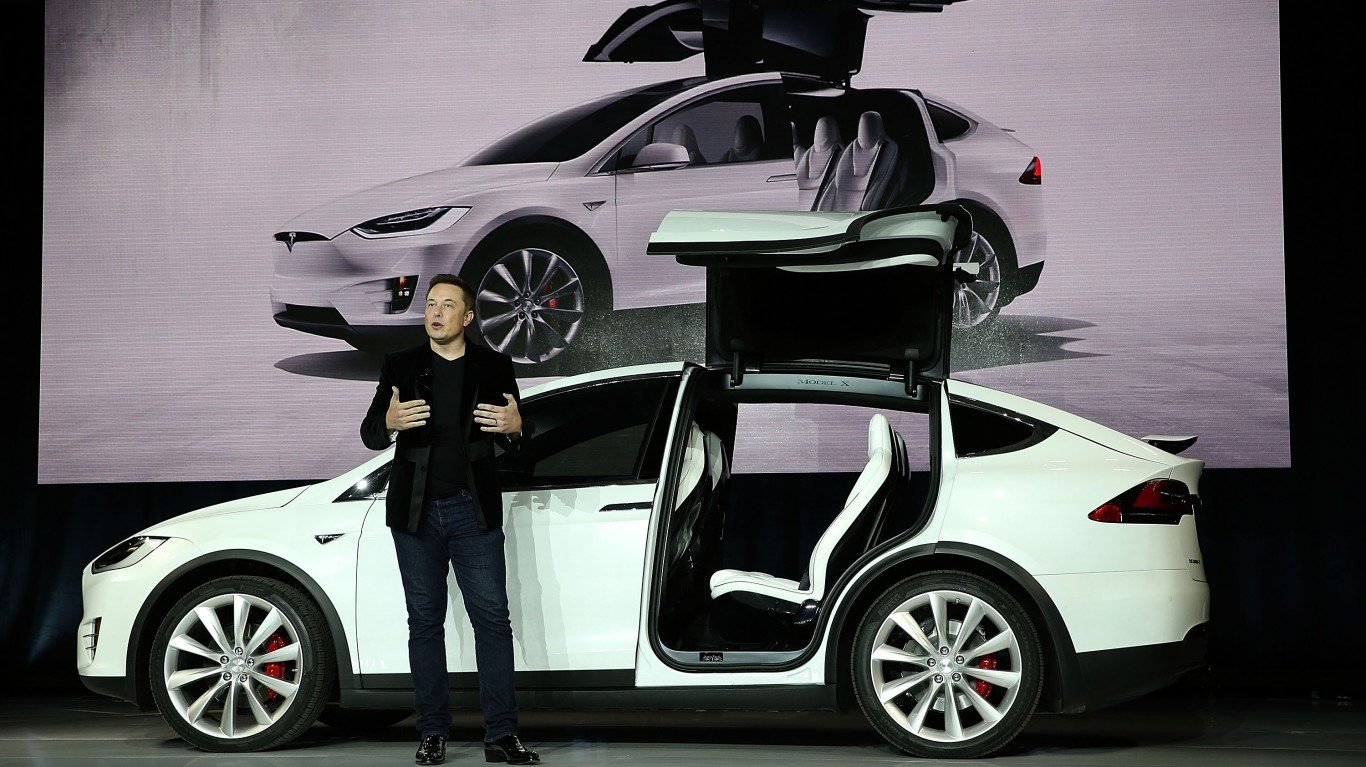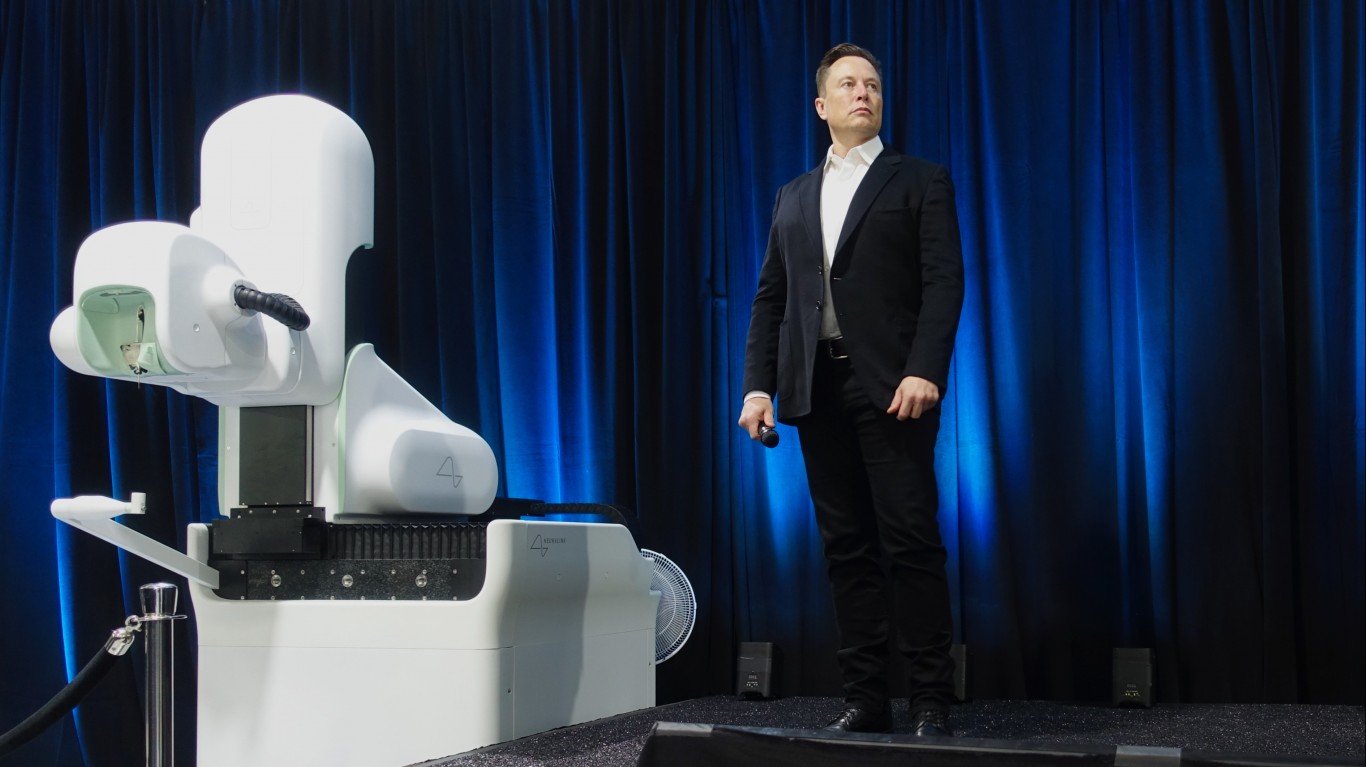From Starlink to Tesla to SpaceX, Elon Musk has given the world some of the most incredible inventions of the last century. He started creating at age 12 and has never stopped inventing new and innovative solutions for the world’s problems. However, along with his brilliant and inventive mind, he is also well-known for his inflammatory and polarizing personality. Musk is hardly the first inventor to have a complicated persona, though. Thomas Edison, Henry Ford, and many others have problematic legacies.
Plenty of people have strong opinions of Musk fueled by his personal behavior and rhetoric, but the impact of his inventions on our world remains undeniable. We can recognize an inventor’s contributions while also acknowledging that human beings are endlessly complicated creatures. So, setting aside the controversies that seem to perpetually swirl around him, here’s a look at 10 amazing things that Musk invented. (For a look at some familiar inventions from yesteryear, click here for 25 modern inventions that are now obsolete.)
To compile this list of Elon Musk’s inventions, 24/7 Tempo looked for inventions that helped Musk ascend to his place of prominence and influence today. We also weighed the technological, cultural, and economic impact of each creation. Special consideration was given to inventions that have changed (or have great potential to change) the everyday lives of millions of people.
1. Blastar

Musk’s inventiveness was evident when he was a child growing up in South Africa. In 1984, when he was just 12 years old, Musk invented a video game that he called Blastar. The BASIC-based game has been compared to other pioneering video games such as Asteroids and Space Invaders.
Musk sold the source code for the game to PC and Office Technology magazine for $500 which, when adjusted for inflation, would be equivalent to over $1,400 today. Not bad for a 12-year-old!
2. Zip2

Zip2 is generally recognized as Musk’s first internet invention. After college, Musk moved to Silicon Valley with his brother, Kimbal, in 1995 to start a dot-com company. Their business, Zip2, gave the world a location-based searchable business directory. The vision was to combine business listings with digital maps, thus making it easier for consumers to find and patronize local businesses. Newspapers found the searchable database especially useful, including The New York Times and the Chicago Tribune. Both purchased software packages from the company.
This type of location-specific digital search sounds like one big yawn in 2023. Everyone has this technology at their fingertips today. But in 1998, this was at the forefront of digital search innovation. The technology that Musk created is precisely what Google uses for its location-based searches today.
Compaq purchased Zip2 in 1999 for $307 million. Musk pocketed $22 million from the sale which he would invest in future projects.
3. Internet Phone Calls

FaceTime and Zoom are part of everyday life in 2023. In the mid-1990s, though, the whole idea of this type of communication still seemed futuristic. In a precursor to these online video chat mediums, Musk created a functionality that allowed computers to call landline telephones. When an internet user ran across a telephone number while surfing the web, that user could call the number directly from their computer.
Musk applied for a patent for this technology in 1997. The patent was granted four years later in 2001. While today’s video communication platforms have far eclipsed this initial idea, Musk pioneered new ways to communicate in the digital age.
4. X.com
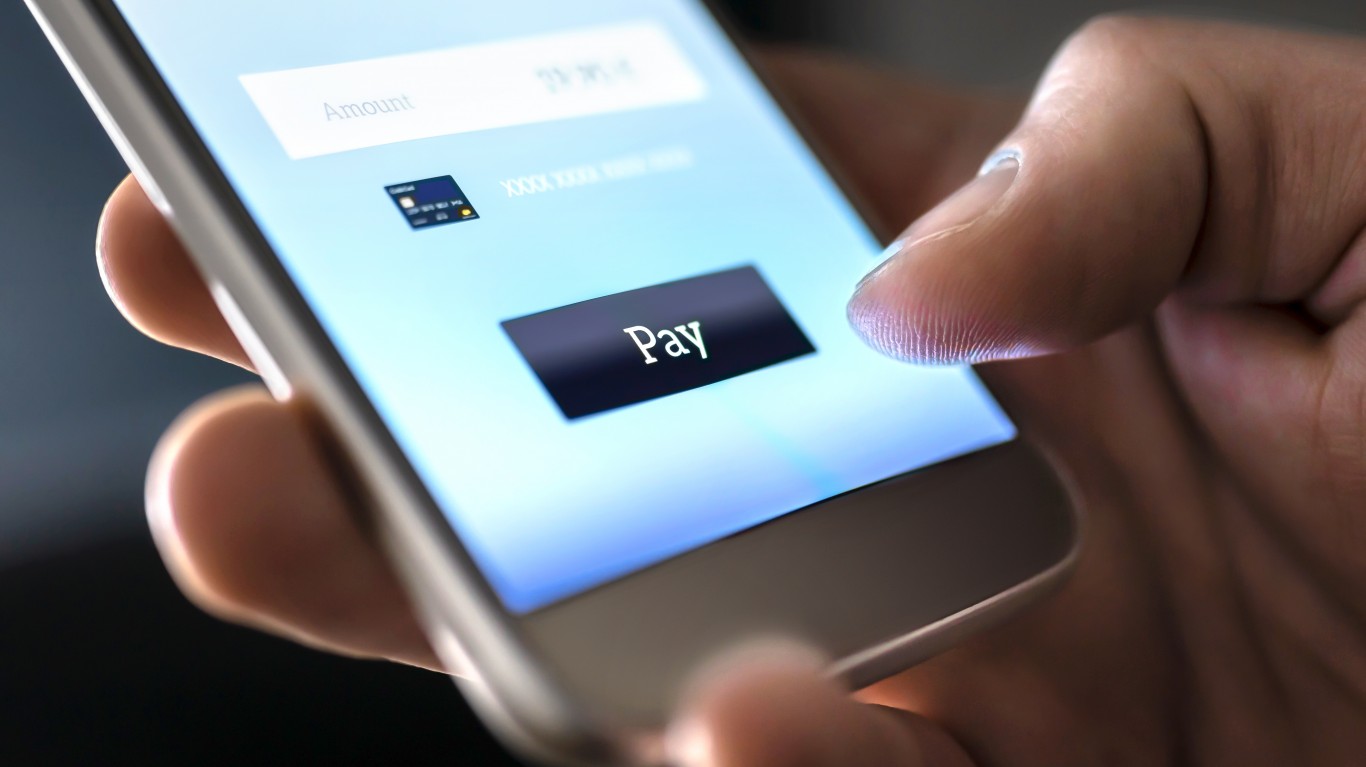
It is no secret that Musk is obsessed with the letter “X.”
- His AI venture is named x.ai.
- Then there is his famous company, SpaceX.
- Tesla’s first SUV was known as Model X.
- After purchasing Twitter, Musk ditched the iconic blue bird logo and changed the social media platform’s name to “X.”
- He even named one of his sons, “X AE A-XII Musk,” with “X” as his first name.
Clearly, Musk believes that “X marks the spot,” but it all started with X.com. He co-founded X.com in 1999 using a portion of the profits he made from the sale of Zip2.
X.com was a pioneer in online banking, payments, and other financial services. It was among the first federally insured online banks. One year after X.com’s launch, the company merged with PayPal. PayPal launched in 1998 under the short-lived name, Confinity. Two years after the merger, eBay acquired PayPal for $1.5 billion. Today, PayPal has approximately 435 million active accounts.
5. SpaceX
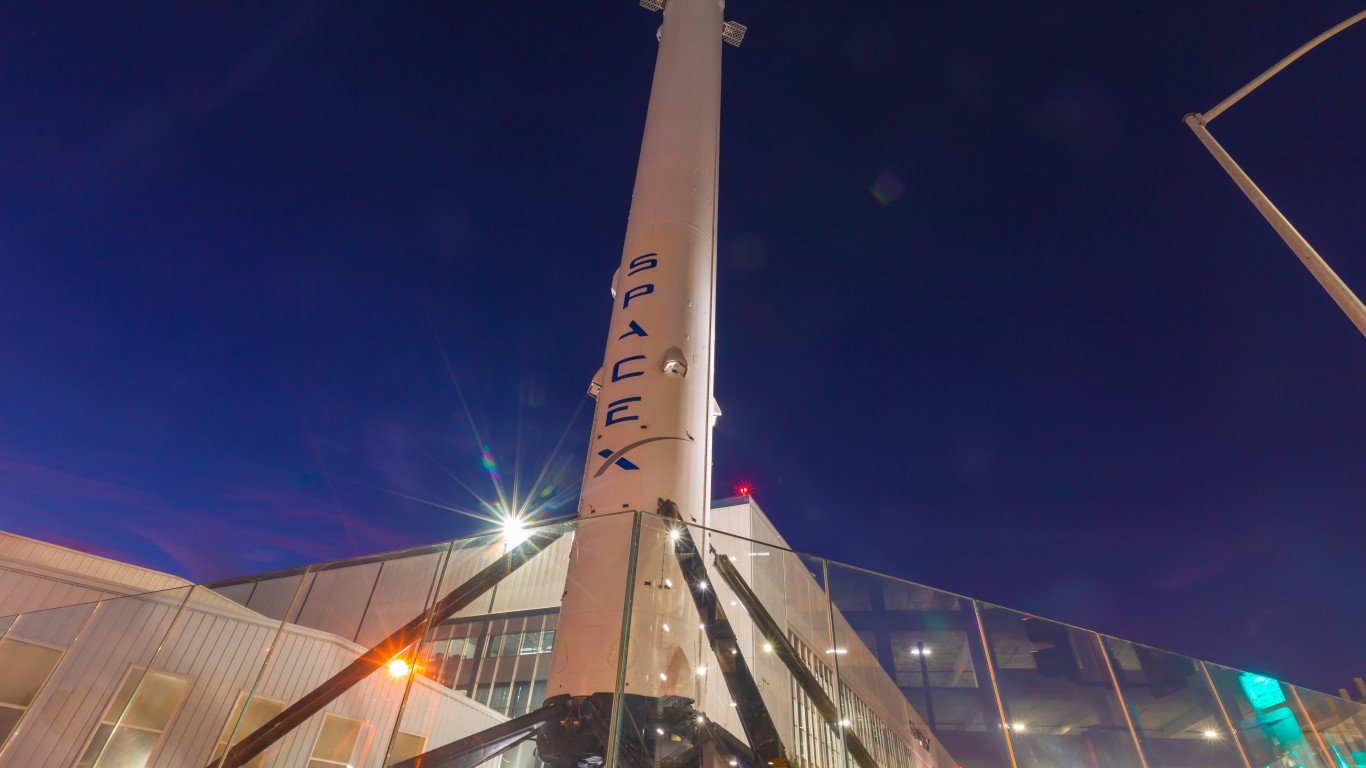
Space Exploration Technologies Corp., known to the world as SpaceX, launched in 2002. Musk created the company with the grandest of visions. He stated that the ultimate goal is to colonize Mars.
SpaceX attempted to launch its first spacecraft in 2006. Falcon 1 (named after the Millennium Falcon from Star Wars) failed in its first launch three attempts, one per year from 2006-2008. Then, on Sept. 28, 2008, the craft saw its first successful launch as it lifted off from the Marshall Islands.
Since then, Space X has refined its spacecraft designs, with successful launches of the Falcon 9 (2010) and the Falcon Heavy (2018). It also created the Dragon, the first private spacecraft to transport humans to the International Space Station.
SpaceX’s Starlink satellites provide internet service to over 60 countries. It is the largest satellite constellation in existence, with nearly 4,500 individual satellites in the chain. ()
6. Tesla
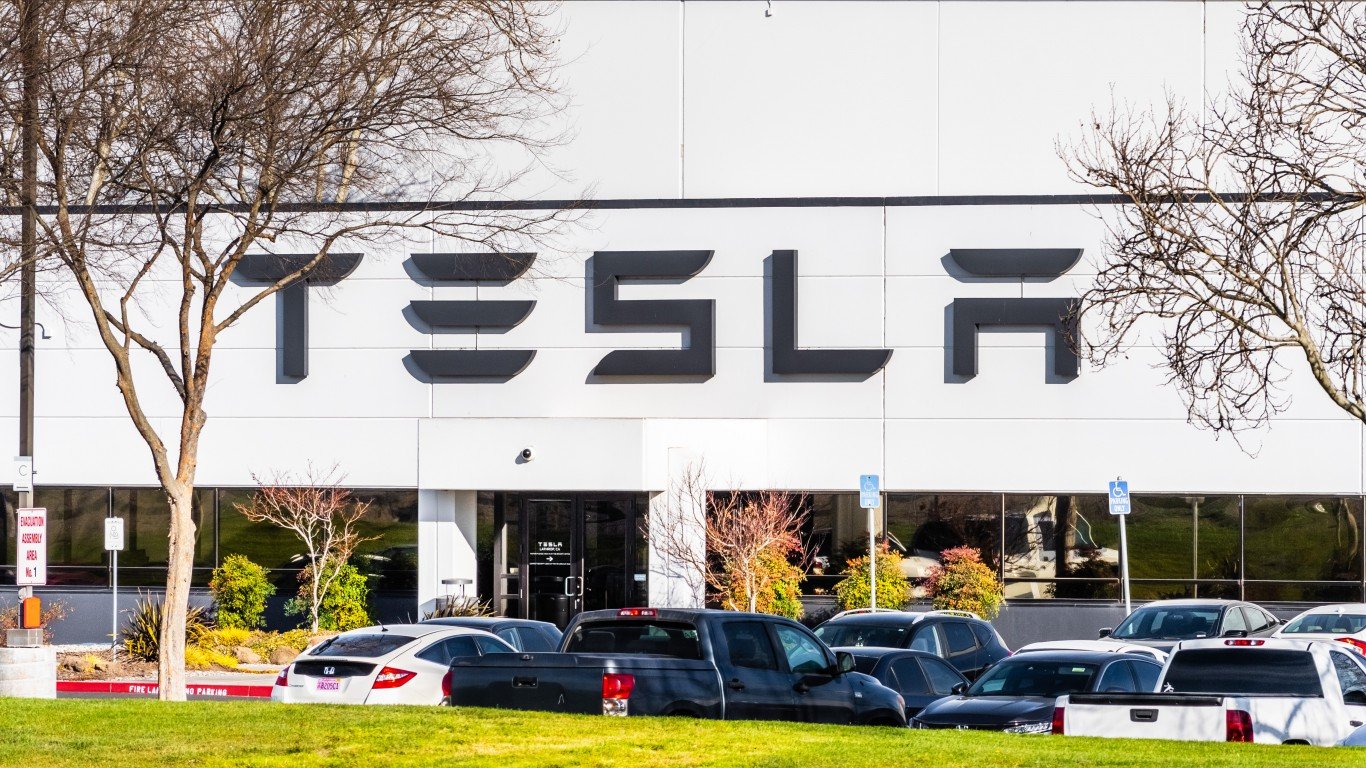
Musk did not invent the electric vehicle (EV). It is impossible to credit any one inventor with that creation. However, Musk’s ingenuity led to some of the most groundbreaking innovations in EV technology and availability.
Tesla was incorporated in 2003. Musk became the majority shareholder and chairman of the board of directors in 2004.
Musk conceptualized and designed batteries, such as Tesla’s Powerwall, that propelled the company forward. He was also instrumental in the development of the Roadster, Tesla’s first EV which debuted in 2008.
Today, there are four Tesla vehicle models on the market, each with multiple variations at various price points that fit within the budget of many modern consumers. As productions costs decrease (one of Musk’s stated objectives), the cost of the vehicles will be further reduced, as well. (.)
7. SolarCity
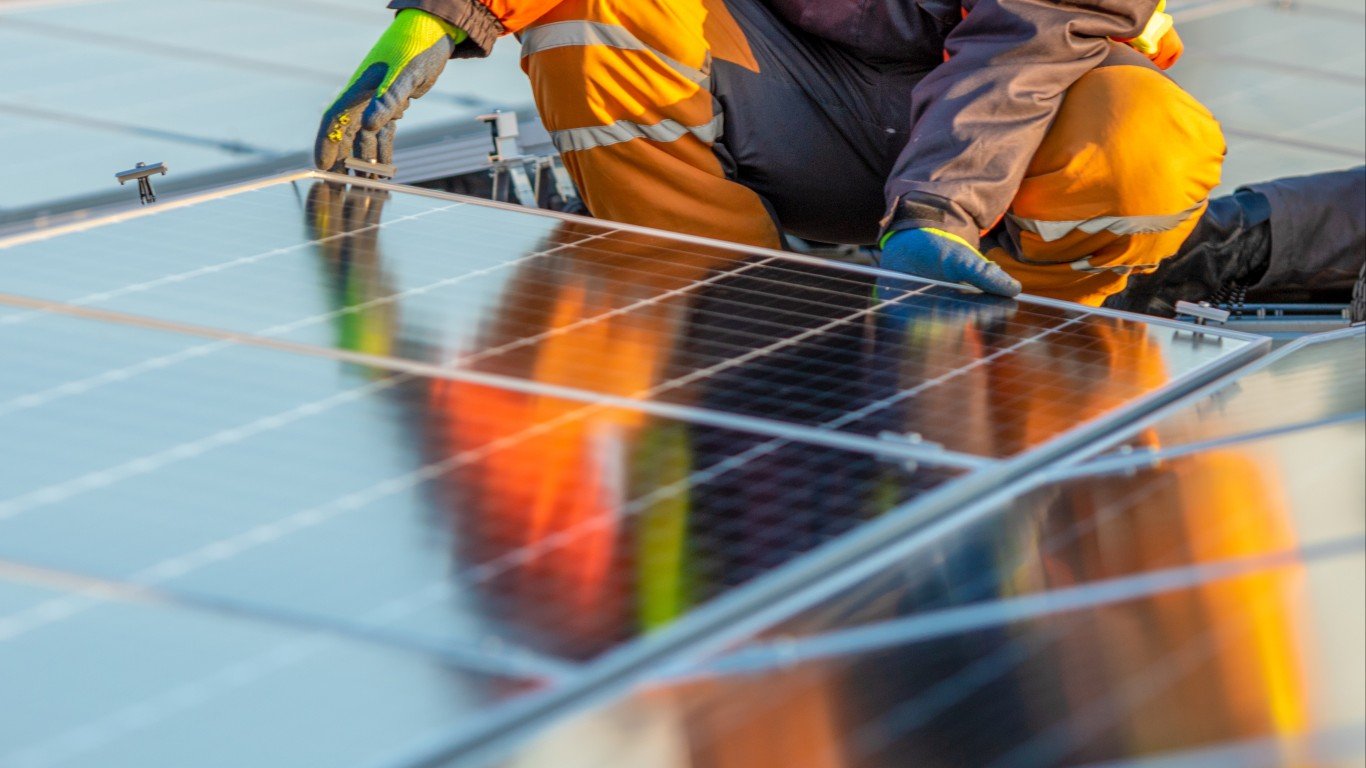
Musk is a longtime advocate of alternative and sustainable energy. In 2006, he provided the initial concept for SolarCity, along with significant financial backing. The company’s mission was to make solar power more affordable and accessible to both businesses and homeowners.
SolarCity merged with Tesla in 2016. Tesla claims it has deployed over half a million solar energy systems in the United States.
8. Hyperloop
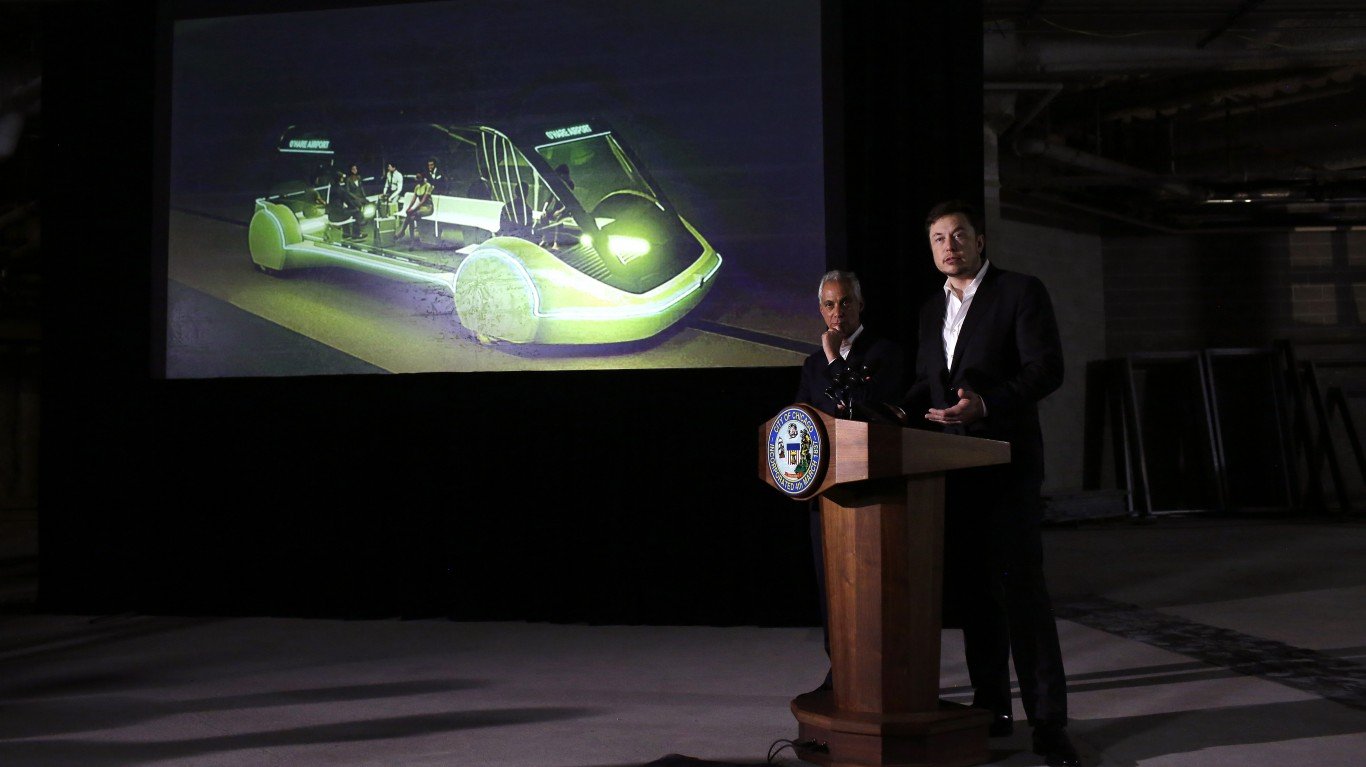
In late 2016, Musk expressed his frustration with traffic in Los Angeles by tweeting, “Traffic is driving me nuts. Am going to build a tunnel boring machine and just start digging…” In a follow-up tweet, he declared, “I am actually going to do this.”
The traffic-busting idea he referenced is known as Hyperloop, an underground rail transportation system that would run at speeds over 700 miles per hour. As an example of Hyperloop’s potential, the subterranean rail system could conceivably cut the commute time between Los Angeles and San Francisco to just 35 minutes.
Musk launched The Boring Company in 2017. While that name may initially sound like a teenager with nothing to do on a Saturday night (“I’m bored!”), it is actually a completely different type of boring…specifically, boring into the ground.
While the Hyperloop rail system is still largely a concept at this point, tests by various collaborators have been promising. It marks another (literally) groundbreaking Musk idea.
9. Neuralink
Some of Musk’s ideas and inventions surely sounded like science fiction when the public first heard of them, but none more so than Neuralink. The company launched in 2016 with the goal of developing an implantable cranial device that can connect with computers. The small device would be embedded in a human skull with electrodes that connect with the brain.
Some of the lofty ambitions for this technology include controlling robotic prosthetic limbs, helping disabled people more effectively use technology, treating brain diseases and injuries, and even navigating the internet using nothing but the power of thought.
While the potential is exciting, there are ethical quandaries that have caused many experts to pause. Experimenting on the human brain is fraught with dangers. The device has reportedly been tested in pigs and monkeys. Most of the monkeys died in the tests, raising the ire of animal rights groups.
Musk and the other scientists who have developed the technology maintain that its potential is like nothing the world has seen before, including new treatments for Parkinson’s disease and other nervous system disorders.
10. Electric Boats and Jets

File this one under “Possible Future Musk Inventions.” He teased the idea for electronically-powered boats and jets as part of Tesla’s master plan in March 2023. In the past, Musk has suggested that an electronic jet would potentially feature a vertical takeoff and landing, meaning future airports could be much smaller. Powering boats and planes with electricity is daunting and the technology has not been created yet. However, given Musk’s track record, we’re not going to bet against him. (Here’s a list of every company Elon Musk owns.)
